




Pink stains on towels can be a frustrating and unsightly problem. If you’ve ever noticed these mysterious stains appearing on your towels, you may be wondering what exactly is causing them. Luckily, there are a few common culprits that could be to blame.
One possible cause of pink stains on towels is a type of bacteria called Serratia marcescens. This bacteria is commonly found in bathrooms and can thrive in moist environments. When it comes into contact with towels, it can produce a pinkish or reddish pigment that stains the fabric.
Another potential cause of pink stains on towels is the presence of iron in your water supply. If your water contains high levels of iron, it can react with the oxygen in the air, creating a reddish or pinkish residue that can transfer onto your towels.
Additionally, certain laundry products, such as chlorine bleach or fabric softeners, can also lead to the development of pink stains on towels. These products contain chemicals that can react with minerals in your water or with the fabric itself, resulting in discolored stains.
To prevent pink stains on your towels, it’s important to address the underlying cause. Regularly cleaning and disinfecting your bathroom, including frequently washing your towels in hot water, can help reduce the growth of bacteria. If you suspect iron in your water supply, consider installing a water filtration system or using a rust-stain remover to treat your towels. Lastly, be cautious when using laundry products and consider switching to alternative options if you continue to experience pink stains.
What Can Cause Pink Stains on Towels?
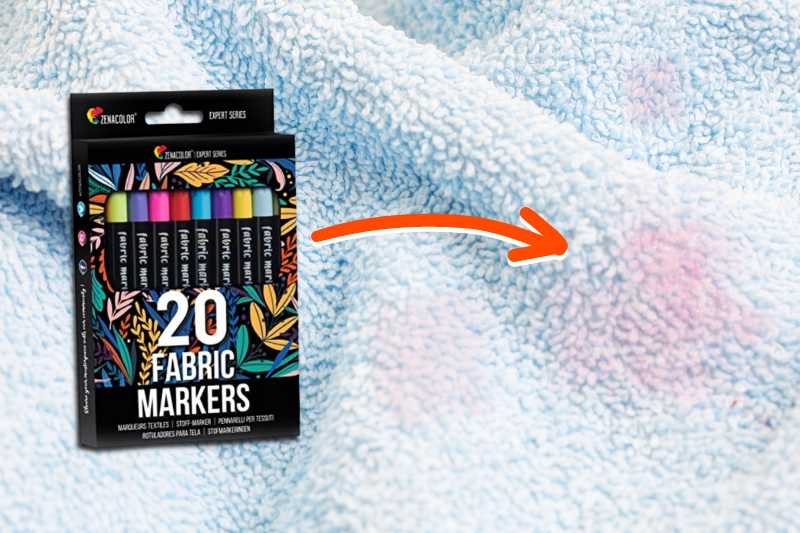
Pink stains on towels can be caused by a variety of factors. Here are some common culprits:
1. Bleeding from clothing or fabrics
One common cause of pink stains on towels is bleeding from clothing or fabrics. This can happen when towels are washed along with items that have not been properly colorfastened.
2. Bacteria or mold growth
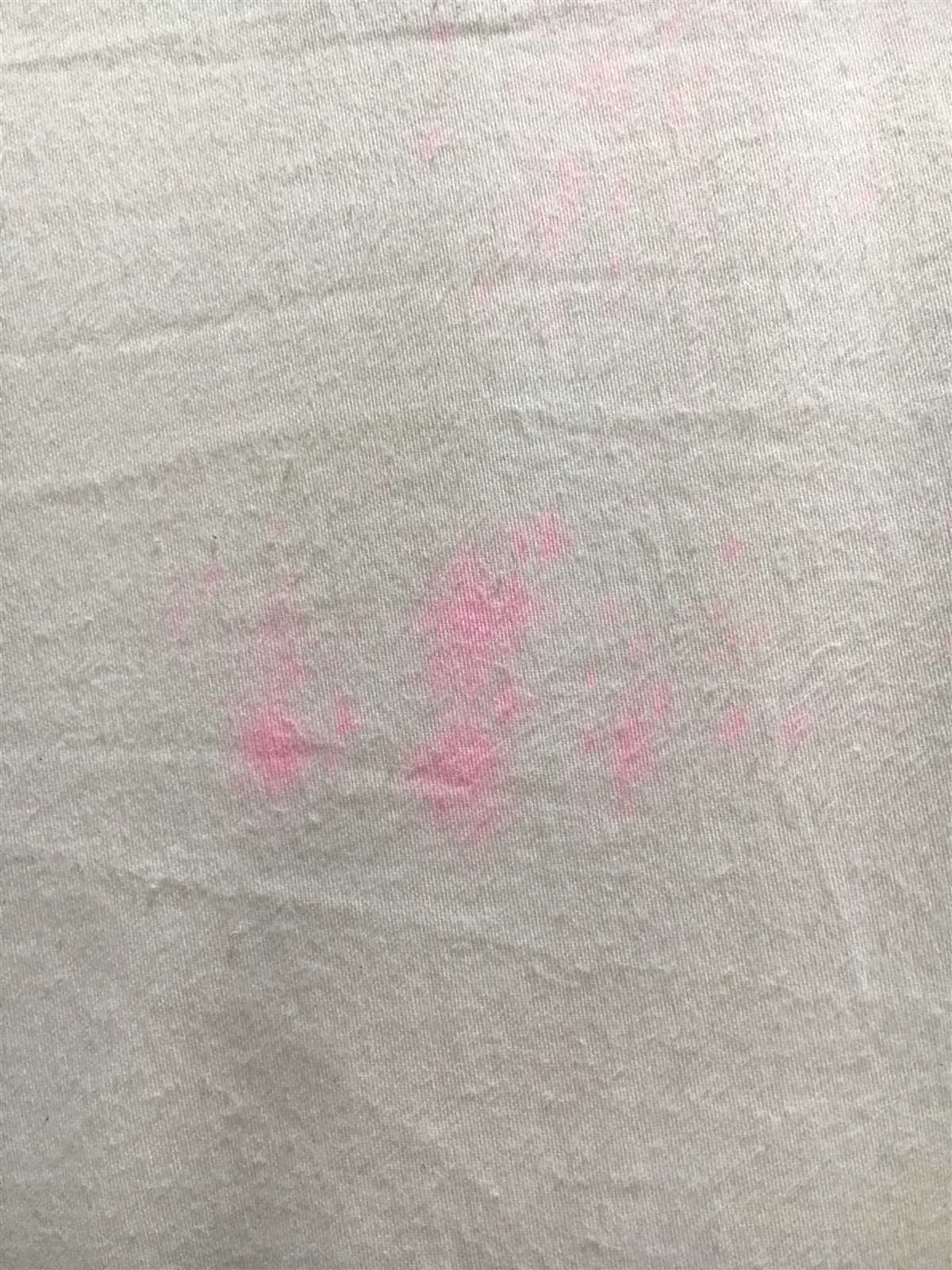
Pink stains on towels can also be caused by bacteria or mold growth. Moisture and poor ventilation can create an environment where these microorganisms thrive and produce pigmented compounds that stain the towels.
3. Water source issues
In some cases, the pink stains on towels may be a result of water source issues. High iron content in water can cause discoloration, and certain minerals can react with detergents or cleaning agents, leading to pink stains.
Note: It is important to identify the cause of pink stains on towels in order to implement the appropriate prevention measures.
The Culprit: Bacteria
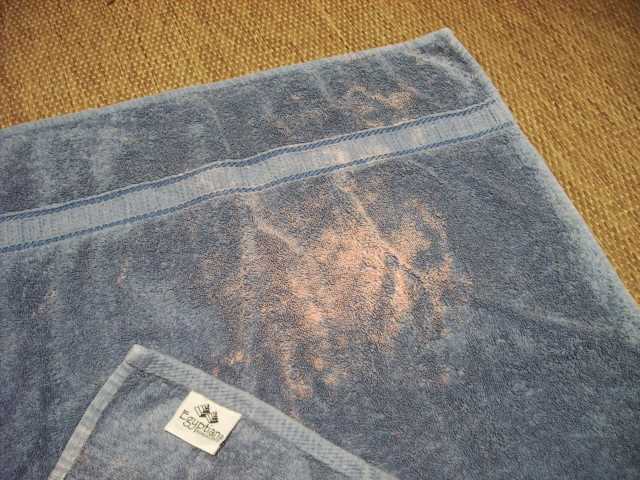
The main culprit behind pink stains on towels is a type of bacteria called Serratia marcescens. This bacterium is commonly found in various environments, including soil, water, and even in the human body. It thrives in moist and warm conditions, making towels the perfect breeding ground for it.
Serratia marcescens produces a reddish-pink pigment called prodigiosin, which is responsible for the pink stains. When the bacteria colonize the towels, they release this pigment, causing the stains to appear. These stains can be particularly stubborn and difficult to remove, especially if they have set in over time.
Besides towels, Serratia marcescens can also be found on various other surfaces, such as shower curtains, bathroom tiles, and even toothbrushes. It can easily spread from contaminated surfaces to towels during use or laundering.
How Does Serratia marcescens Get on Towels?
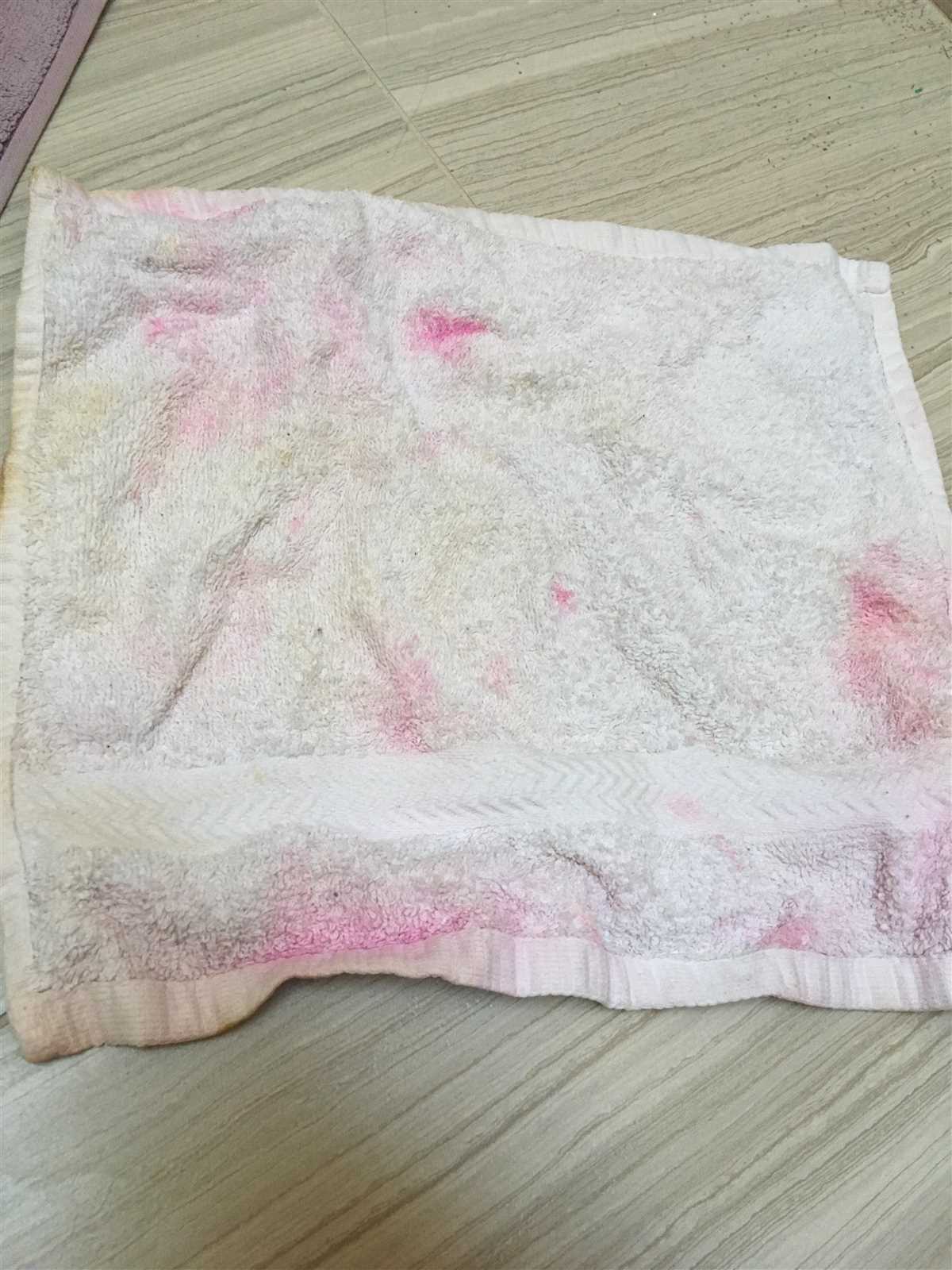
There are several ways Serratia marcescens can end up on your towels:
- Contaminated hands: If you have the bacteria on your hands, it can transfer onto the towels when you use them.
- Contaminated surfaces: If your towels come into contact with contaminated surfaces, such as bathroom countertops or shower curtains, the bacteria can transfer onto them.
- Water and air: Serratia marcescens can be present in water and air, and if your towels come into contact with these sources, they can become contaminated.
Preventing Pink Stains on Towels
To prevent pink stains on your towels, it is important to take preventive measures:
- Regularly wash your towels: Washing your towels frequently with hot water and detergent can help remove and prevent the growth of bacteria.
- Avoid sharing towels: Sharing towels can spread bacteria between individuals. Each person in your household should have their own towel.
- Dry towels properly: Ensure that your towels are completely dry before storing them. Bacteria thrive in moist environments, so drying your towels thoroughly can help prevent bacterial growth.
- Keep a clean bathroom: Regularly clean and disinfect your bathroom to minimize bacterial contamination on surfaces.
By following these preventive measures, you can reduce the chances of pink stains appearing on your towels and maintain their cleanliness and freshness.
Bacterial Growth Factors
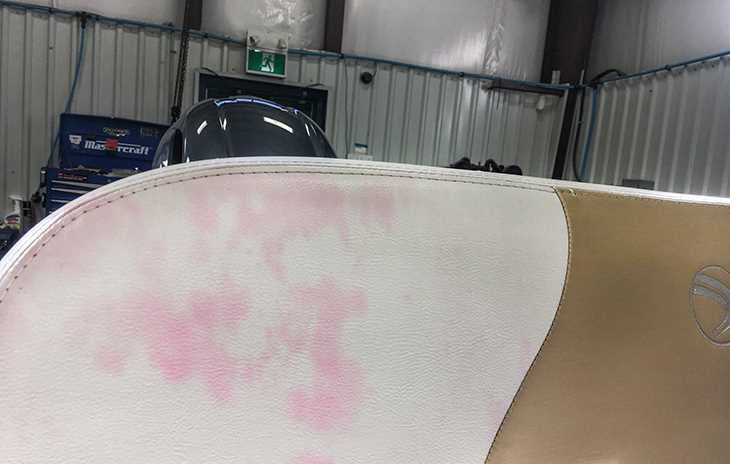
Bacterial growth on towels can be caused by various factors that create an ideal environment for bacteria to thrive. These factors include:
- Moisture: Bacteria require moisture to grow and reproduce. When towels are not completely dried between uses or stored in a humid environment, it creates the perfect conditions for bacterial growth.
- Warmth: Bacteria also thrive in warm temperatures. Towels left in warm or hot areas, such as bathrooms or laundry rooms, provide an optimal environment for bacterial growth.
- Organic Matter: Organic matter, such as dead skin cells, sweat, and body oils, can serve as a nutrient source for bacteria. When towels are not thoroughly cleaned or washed with appropriate detergents, these organic residues can remain and promote bacterial growth.
- Improper Storage: Storing damp towels in closed containers or in piles can restrict airflow and promote moisture retention, creating an environment conducive to bacterial growth.
- Infrequent Washing: Infrequent washing of towels allows bacteria to accumulate over time. Regular washing with hot water and an appropriate detergent helps to kill bacteria and prevent their growth.
The Role of Mineral Content in Water
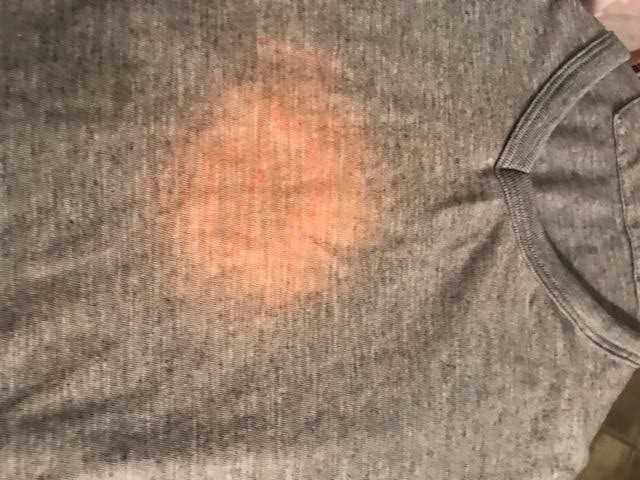
Mineral content in water plays a significant role in causing pink stains on towels and other fabrics. These stains, often referred to as “pink mildew”, can be quite stubborn to remove and can leave fabrics with a permanent discoloration.
One of the main minerals found in water that contributes to the formation of pink stains is iron. Iron can be naturally present in groundwater and can also be introduced through old pipes and plumbing systems. When water containing iron comes into contact with fabrics, it can oxidize and form a pink-colored residue.
Another mineral that can contribute to the formation of pink stains is manganese. Like iron, manganese can be present in water sources and can react with oxygen in the air to create a pink-colored residue. This residue can transfer onto towels and other fabrics during the washing process.
In addition to iron and manganese, other minerals such as copper and zinc can also contribute to the formation of pink stains. Similarly to iron and manganese, these minerals can be present in water sources and can oxidize when exposed to air, leading to the formation of pink-colored residues.
To prevent the formation of pink stains on towels, it is essential to address the mineral content in the water. Installing a water softener or using a water filtration system can help reduce the levels of iron, manganese, and other minerals in the water, minimizing the chances of pink stains forming on towels and other fabrics.
Regularly cleaning and maintaining plumbing systems and pipes can also help prevent the introduction of minerals into the water supply. Additionally, it is advisable to follow manufacturer guidelines when washing towels and use detergent and cleaning agents specifically designed to remove mineral residue.
By understanding the role of mineral content in water and taking necessary precautions, it is possible to prevent pink stains on towels and preserve the appearance and quality of fabrics.
Prevention Tips for Pink Stains
- Use white or light-colored towels: Pink stains are more visible on lighter fabrics, so opting for white or light-colored towels can make it easier to spot and address any potential issues.
- Avoid contact with certain products: Some personal care products, such as acne medications, mouthwashes, hair dyes, and even certain sunscreens, can contain ingredients that may cause pink stains. Avoid allowing these products to come into direct contact with your towels.
- Wash new towels before use: New towels can sometimes contain excess dyes or chemicals from the manufacturing process. Washing them before use can help remove any potential sources of pink stains.
- Separate towels from other laundry: Pink stains can be caused by the transfer of dyes from other clothing items during the wash cycle. To prevent this, wash your towels separately from colored clothing items.
- Choose suitable laundry detergent: Certain laundry detergents, particularly those containing optical brighteners, can contribute to the formation of pink stains. Opt for a detergent that is free of optical brighteners and specifically designed for use with colored fabrics.
- Consider using color-catching sheets: Color-catching sheets or laundry pods can help absorb and trap any loose dyes in the wash water, preventing them from transferring onto your towels.
- Avoid excessive heat: High temperatures can cause dyes to bleed, potentially leading to pink stains on your towels. Wash your towels in cool or lukewarm water, and avoid using high heat settings on your dryer.
- Clean your washing machine regularly: Regularly cleaning your washing machine can help remove any built-up residue or dye particles that may be contributing to the occurrence of pink stains.
- Inspect towels for stains before drying: Before transferring your towels to the dryer, carefully inspect them for any signs of pink stains. If you notice any, rewash them before drying.
By following these prevention tips, you can reduce the likelihood of pink stains appearing on your towels and keep them looking fresh and clean.
How to Remove Pink Stains from Towels
If you have noticed pink stains on your towels, don’t worry, there are ways to remove them and restore your towels to their original condition. Follow these steps to get rid of those unsightly stains:
- Pre-treat the stains: Before washing the towels, it’s important to pre-treat the stains. Mix a solution of equal parts hydrogen peroxide and water. Apply this solution directly to the pink stains and let it sit for about 10 minutes.
- Wash the towels: After pre-treating the stains, wash the towels as usual. Use a regular cycle with mild detergent and the hottest water allowed for the fabric. This will help remove any remaining pink residue.
- Clean the washing machine: Once the towels are clean, it’s important to clean the washing machine as well to prevent future pink stains. Run an empty cycle with hot water and add one cup of white vinegar to the water. This will help remove any remaining traces of the pink stain-causing bacteria.
- Time and sun: If the stains persist after washing and cleaning the washing machine, you can try drying the towels outside in the sunlight. The combination of time and sunlight may help fade the stains.
By following these steps, you should be able to remove pink stains from your towels and prevent them from recurring in the future. Remember to always wash your towels properly and maintain good hygiene practices to keep them clean and stain-free.
FAQ
What causes pink stains on towels?
Pink stains on towels are typically caused by a bacteria called Serratia marcescens. This bacteria is commonly found in bathrooms and can thrive in moist environments, such as damp towels.
Can using certain detergents lead to pink stains on towels?
Yes, certain detergents can contribute to the development of pink stains on towels. This is because some detergents contain chemicals that can react with the bacteria in the towels, causing them to turn pink.
How can I prevent pink stains from appearing on my towels?
To prevent pink stains on towels, it’s important to wash your towels regularly and ensure they dry completely after each use. Additionally, using a disinfectant or bleach in your laundry routine can help kill bacteria and prevent the growth of pink stains.
Are pink stains on towels harmful to health?
Pink stains on towels are generally not harmful to health. However, it’s a good idea to eliminate them as they can indicate the presence of bacteria in your towels. This can be done by washing your towels properly and taking preventive measures to avoid their growth.













